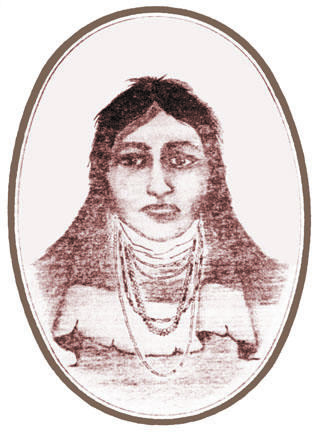
Section Branding
Header Content
Forgotten Women Part 3: Mary Musgrove
Primary Content

Savannah is a place that’s famously full of history. But many of the people who shaped that history, particularly women, are relatively unknown.
So GPB has created a series called “Forgotten Women” looking at some of the untold stories in the region.
Click here to find the rest of GPB Savannah's Forgotten Women series.
Mary Musgrove was mixed with Creek Indian and European ancestry. She worked as a translator for General Oglethorpe helping him to settle Georgia.
Musgrove used her bicultural heritage and shrewd nature to become what some historians call- one of the most important figures in Georgia history.
John Brannen a tour guide at Savannah’s Massie Heritage Center walked a group of elementary students through the city’s historic squares while explaining the founding of Georgia.
Many Georgian’s know the esteemed General Oglethorpe, "founder" of Savannah and creator of the square grid system downtown is known for. However, the same doesn’t apply to his translator and peace negotiator, Mary Musgrove.
"Unfortunately she’s been misunderstood, and misrepresented and largely just forgotten about by a lot of historians," said Brannen.
Coosaponakeesa later called Mary Musgrove was born in Coweta, near current day Macon, GA. Her mother was a Creek Indian, her father, an English trader. Musgrove moved to South Carolina when she was a child to receive an English education. She used her knowledge of both cultures not only to translate but to advance her business career by owning multiple trading posts.
Brannen says without her knowledge the settling of Georgia could have gone very differently.
Archeologist Rita Elliot agrees.
"I think Mary in her role and Oglethorpe in his role, they had a good working relationship and I don’t think that would have developed to the extent with anybody else," she said. "I think that really did facilitate the friendliness between the two cultures and the way it progressed over the years so smoothly."
Mary and her family moved from their South Carolina home around 1734 to a site along the Savannah River– now home to the Georgia Port Authority.
There she set up the Cowpens, one of the most famous trading posts in colonial Georgia history. It would become the center of commerce between natives, colonists and the British.
But as Steve Hahn, author of "The Life and Times of Mary Musgrove" explains, she would soon fall on hard times.
"She’s also a somewhat tragic figure…When Mary and her first husband lived in SC they were modestly prosperous. They moved to Georgia and within two years Mary has lost both her sons and her husband. I don’t think she ever got over that," he explained.
In 1737 Musgrove married Army Ranger Jacob Matthews. During this time she was active in recruiting Creek soldiers to fight for the British.
At General Oglethorpe’s request, Musgrove and Matthews opened a fortified trading post along the Altamaha River as a look out base and defense barrier against Spanish enemies in Florida.
Archeologist Chad Braley says she was a defender of the frontier.
"Unfortunately," he explained, "it fared badly for her because after her second husband became ill he left and Spanish Indians came up and burned the place to the ground and killed four people."
Her husband never recovered from his illness and died shortly after the attack.
Over the years Musgrove was depicted in traditional Indian dress, called a princess and compared to Pocahontas and Sacajawea. But Steve Hahn says these are not accurate portrayals.
"The good submissive Indian woman that converts to Christianity and does what her husband tells her and helps the white man conquer the territory. I don’t think Mary or any of these figures really fit that mold…"
She was a business woman and entrepreneur focused on retribution.
Indian Chief Tomochichi gifted her several pieces of land but the British government refused to recognize the transactions for two decades.
Finally, at sixty years old she struck a deal to receive a monetary settlement and St. Catherine’s Island.
She died there just a few years later in 1765. Rita Elliot says she is amazed by what Mary accomplished during her lifetime.
"She was such a substantial figure economically in the deerskin trade, politically with general Oglethorpe and the colonist and the settling of Ga. And also ethnically with the Creek Indians and their role and relationship between the British and Spanish as well."
The excavation of her Cowpens trading post in 2002 prompted more accurate research into Mary Musgrove’s life and Native American colonial culture. Archeologists found about 30,000 artifacts at the site.
They are now on located at the University of Georgia's Laboratory of Archaeology - helping to keep her memory alive.
Tags: GPB, gpb gpb savannah, mary musgrove, general oglethorpe, Savannah, georgia colony, forgotten women, chief tomochichi
Bottom Content

